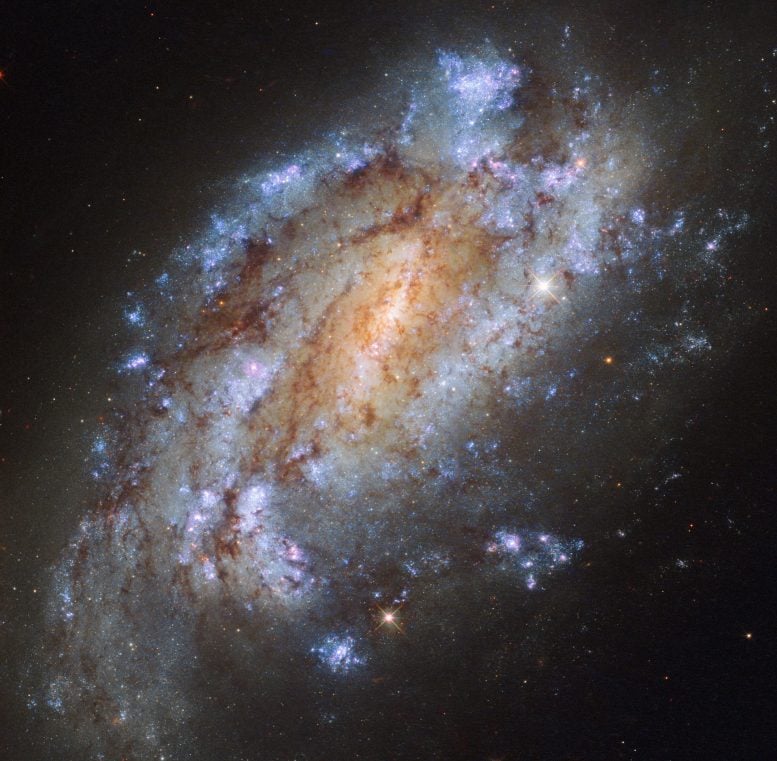
NGC 1559 is located in the southern constellation of Reticulum. Its spiral arms are filled with star formation. Credit: Mathias Jäge, ESA/Hubble & NASA
Roughly 50 million light-years away lies a somewhat overlooked little galaxy named NGC 1559. Pictured here by Hubble’s Wide Field Camera 3, this barred spiral lies in the little-observed southern constellation of Reticulum (The Reticule).
NGC 1559 has massive spiral arms chock-full of star formation and is receding from us at a speed of about 1300 km/s. The galaxy contains the mass of around ten billion Suns — while this may sound like a lot, that is almost 100 times less massive than the Milky Way. Although NGC 1559 appears to sit near one of our nearest neighbors in the sky — the Large Magellanic Cloud (LMC), this is just a trick of perspective. In reality, NGC 1559 is physically nowhere near the LMC in space — in fact, it truly is a loner, lacking the company of any nearby galaxies or membership of any galaxy cluster.
Despite its lack of cosmic companions, when this lonely galaxy has a telescope pointed in its direction, it puts on quite a show! NGC 1559 has hosted a variety of spectacular exploding stars called supernovae, four of which we have observed — in 1984, 1986, 2005, and 2009 (SN 1984J, 1986L, 2005df [a Type Ia], and 2009ib [a Type II-P, with an unusually long plateau]).
NGC 1559 may be alone in space, but we are watching and admiring from far away.

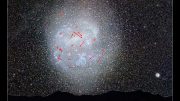

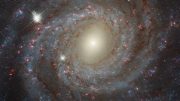
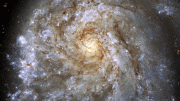
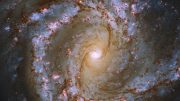
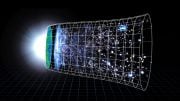
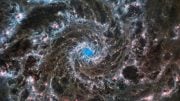
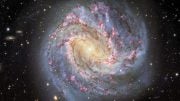
The main idea of the formation of celestial bodies was actually given by Sir Isaac Newton. Once upon a time, the world was filled with a homogeneous cloud of neutral hydrogen. If we look very far back in time, we will see how condensations appear in this cloud which, under the influence of gravitation, do not turn into a single huge mass, but transform into beautiful structured galaxies in which beautiful constellations appear by condensation. Unfortunately, this remarkable picture does not correspond to observations. We do not see gas clouds in which galactic structures gradually appear. There is no any gas reservoirs. The most distant observations demonstrate ready-made galaxies with all their structures and stellar populations. So, the new cosmogony only added dark matter and dark energy, which unfortunately are not observed.
I think all galaxies are beautiful.
We are very alone in this galaxy aren’t we?